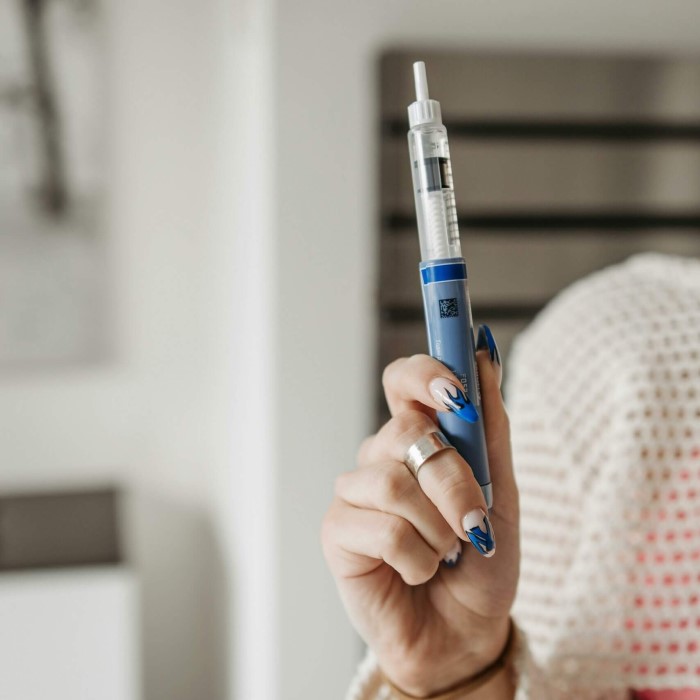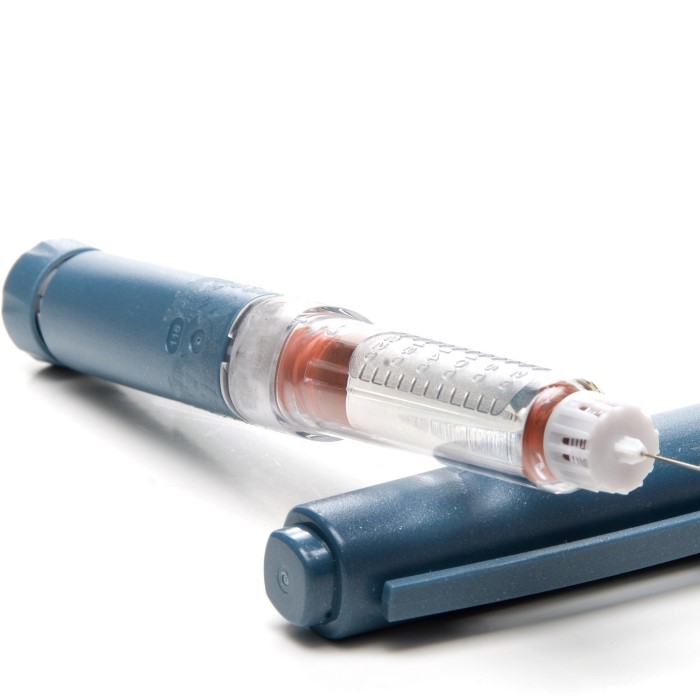
Essential Tips on How to Inject Insulin Pen for New Users
Introduction: Understanding Insulin Injection
For individuals with diabetes, mastering how to inject insulin pen is crucial for effective management of blood glucose levels. Insulin pens offer an easy-to-use, portable solution for delivering insulin, making them a preferred choice for many. However, new users often feel overwhelmed by the process. Understanding how to use these pens confidently can lead to better diabetes control and a significant improvement in quality of life. In this article, we will discuss essential tips for new insulin pen users, covering preparation, injection techniques, safety practices, and common questions related to insulin administration.

What is an Insulin Pen?
To make the most of your insulin pen, it’s helpful to understand its components and functions.
Overview of the Insulin Pen
- Definition: An insulin pen is a medical device designed for self-administration of insulin. It allows users to inject insulin in a precise and controlled manner, which is vital for maintaining stable blood sugar levels.
- Components: Most insulin pens consist of a cartridge containing insulin, a dial for setting the dosage, and a retractable needle for injections. This design eliminates the need for traditional syringes and allows for discreet use in various settings.
Advantages of Using an Insulin Pen
Ease of Use
- User-Friendly Design: Insulin pens feature a straightforward design that enhances usability. Their intuitive layout makes them perfect for beginners who may feel overwhelmed by the prospect of injecting insulin.
- Simple Mechanism: The operation of insulin pens involves few steps, allowing users to become proficient quickly. With just a few clicks and presses, they can prepare the pen and administer the insulin.
- Quick and Efficient Delivery: Insulin pens enable rapid insulin delivery without complicated assembly or multiple steps. This efficiency is particularly beneficial for people with busy lifestyles, as they can administer their medication in seconds.
- Minimal Training Required: Because of their simplicity, individuals do not need extensive training to use them effectively. Most users can learn how to inject insulin confidently after just a brief demonstration.
Portability
- Compact Design: The small size and lightweight nature of insulin pens make them easy to carry. Users can slip a pen into their pocket, purse, or bag without inconvenience.
- On-the-Go Administration: This portability ensures that users can administer their medication whenever necessary. Whether at work, traveling, or out with friends, having access to an insulin pen helps maintain routine diabetes care.
-
Discreet Use: Insulin pens allow users to inject insulin discreetly, without drawing attention. This aspect of design supports users in maintaining their privacy while managing their diabetes in public settings.
- Versatility in Locations: The user-friendly nature and portability of insulin pens make it easy to use them anywhere—be it at home, in the office, or during outings. This versatility ensures that users never miss a dose.
Less Discomfort
- Reduced Pain during Injection: Many individuals report that insulin pens cause significantly less discomfort than traditional syringes. This is largely due to the smaller gauge needles used in pens, which minimize pain at the injection site.
- Quick Injection Process: The faster injection times associated with insulin pens also contribute to a more comfortable experience. The quick delivery mechanism allows users to inject their medication without prolonged discomfort.
- User Satisfaction: As a result of these factors, many users feel more at ease with insulin pens, which leads to higher compliance. They are likely to stick to their prescribed regimen because they associate the process with less pain and anxiety.
- Preference Over Traditional Methods: As users experience less discomfort with insulin pens, they often prefer them over other methods, such as syringes. This preference encourages long-term adoption, improving overall diabetes management.
Preparing for Your Insulin Injection
How to inject insulin pen? Preparation is key to ensuring a successful insulin injection experience. Here are the steps you should follow:
Gather Your Supplies
- Collect Necessary Tools: Before you begin, gather your insulin pen, a new needle, alcohol wipes, and a sharps disposal container. Having these items at hand will streamline the injection process and minimize stress.
- Check Your Insulin: Ensure that your insulin pen is not expired. Always check the expiration date and inspect the insulin for any discoloration or particles before use.
Choose an Injection Site
- Identify Suitable Areas: Common injection sites include the abdomen, thighs, and upper arms. Each site has its advantages, and it’s important to rotate injection sites to avoid irritation.
- Clean the Area: Use an alcohol wipe to disinfect the area before injection. This practice helps reduce the risk of infection and makes the injection more comfortable.
How to Inject Insulin Pen: Step-by-Step Guide
Now that you are prepared, follow these detailed steps to inject insulin safely and effectively.
Prepare the Insulin Pen
- Attach a New Needle: If you’re using a reusable pen, make sure to attach a new needle to the pen securely. Ensure that it is fitted properly to avoid any leaks during injection.
- Prime the Pen: Before the first use of a new pen or needle, you need to prime it. To do this, dial the pen to a small dose (usually 2 units) and push the injection button to expel a drop of insulin. This step ensures that the needle is ready for injection.
Locate the Injection Site
- Position the Pen: Hold the insulin pen at a 90-degree angle to your skin for most sites. If you’re injecting into the abdomen, you can pinch the skin to create a fold, which may help reduce discomfort.
- Insert the Needle: Quickly insert the needle into the chosen site. A quick insertion can minimize discomfort during the injection.
Administer the Insulin
- Press the Button: Once the needle is in place, firmly press the injection button on the pen to deliver the insulin. Hold the button down for several seconds to ensure that the full dose is dispensed.
- Withdraw the Needle: After delivering the insulin, gently withdraw the needle from the injection site. Avoid any twisting motion as this can cause unnecessary discomfort.
Post-Injection Care
Taking the proper steps after injecting insulin is just as important as the injection itself.
Observe the Injection Site
- Check for Reactions: After the injection, observe the area for any signs of irritation, redness, or swelling. Mild redness is normal, but persistent irritation should be reported to your healthcare provider.
- Avoid Rubbing the Area: Do not rub the injection site after removing the needle. Rubbing can increase the risk of irritation and discomfort.
Dispose of the Needle Safely
- Use a Sharps Container: Place the used needle in a designated sharps disposal container immediately after use. This prevents needle-stick injuries and ensures safe disposal.
- Store Your Pen Properly: Store your insulin pen in a cool, dry place away from direct sunlight. Ensure the pen is capped to protect the needle and prevent contamination.
Common Questions About Insulin Injections
Addressing common concerns can help new users feel more confident and informed about their insulin injections.
What is the correct way to inject an insulin pen?
To inject an insulin pen correctly, start by cleaning the injection site and priming the pen. Hold the pen at a 90-degree angle, insert it quickly, press the button, and hold for a few seconds before withdrawing the needle.
Do you need to pinch the skin when using an insulin pen?
Pinching the skin is generally recommended for abdominal injections but may not be needed for other areas. Pinching helps create a fold, making the insulin delivery more comfortable.
What is the 2/3 1/3 rule for insulin?
The 2/3 1/3 rule refers to splitting daily insulin needs into two-thirds for daytime and one-third for nighttime. This method helps maintain stable blood sugar levels throughout the day.
How to use insulin in pregnancy?
Women who require insulin while pregnant should consult their healthcare provider for personalized advice. Insulin needs may change during pregnancy, and careful monitoring is essential.
Conclusion: Mastering the Insulin Injection Process
In conclusion, learning how to inject insulin pen properly represents an important skill for anyone managing diabetes. By following the steps outlined in this guide, users can feel confident in their ability to self-administer insulin effectively and safely. The combination of preparation, technique, and post-injection care will foster a positive experience and help individuals maintain better control of their diabetes.
New users should practice regularly, make a habit of keeping a log of their injections, and not hesitate to seek help if they encounter difficulties. Embracing this process can empower individuals to take charge of their health, leading to improved quality of life and overall well-being. Remember, diabetes management is a journey, and mastering insulin injection is a crucial step toward achieving your health goals. If questions arise, always consult with your healthcare provider for personalized advice and support.




